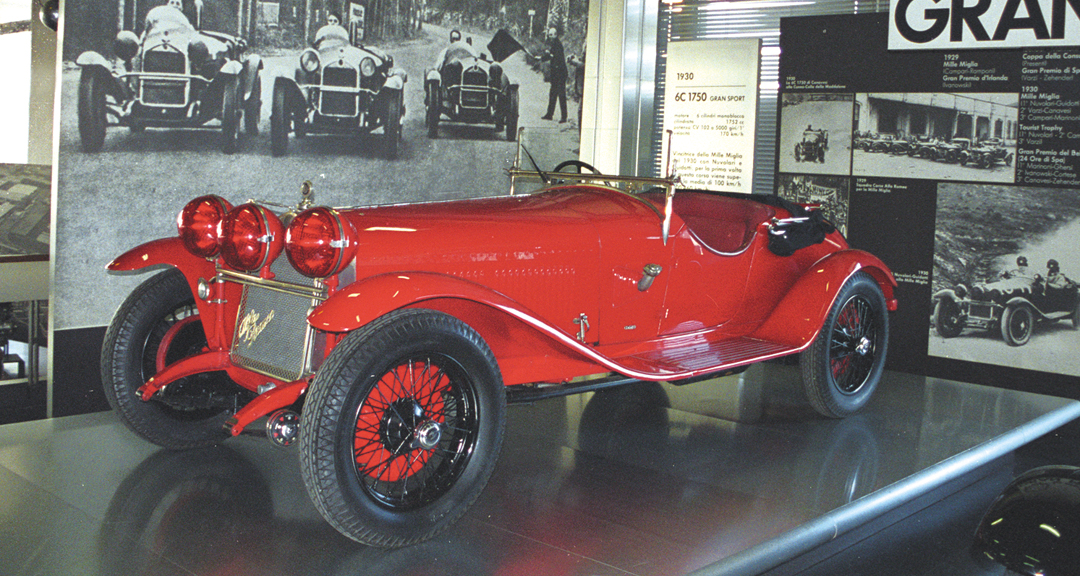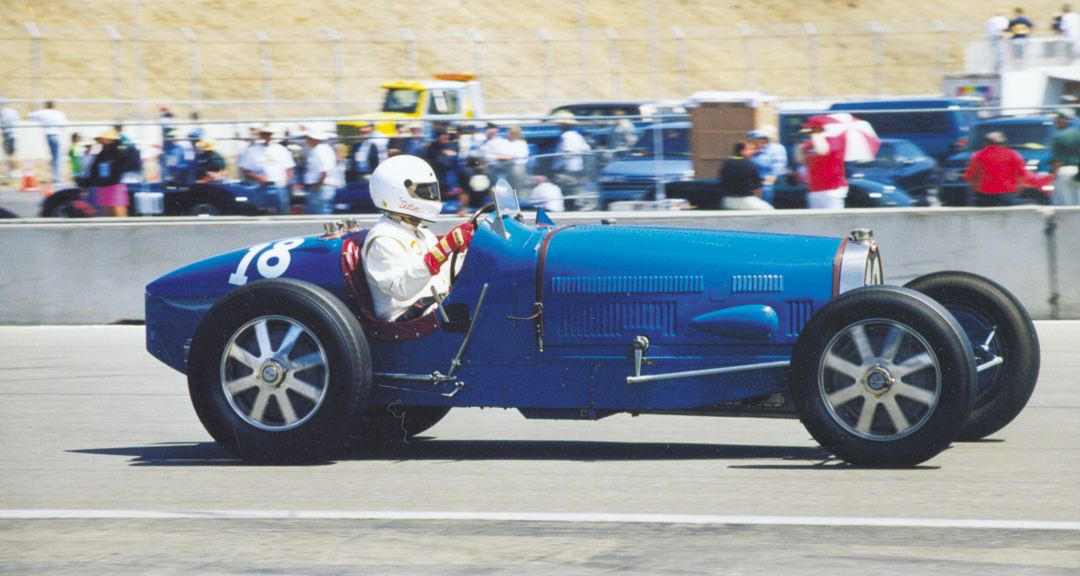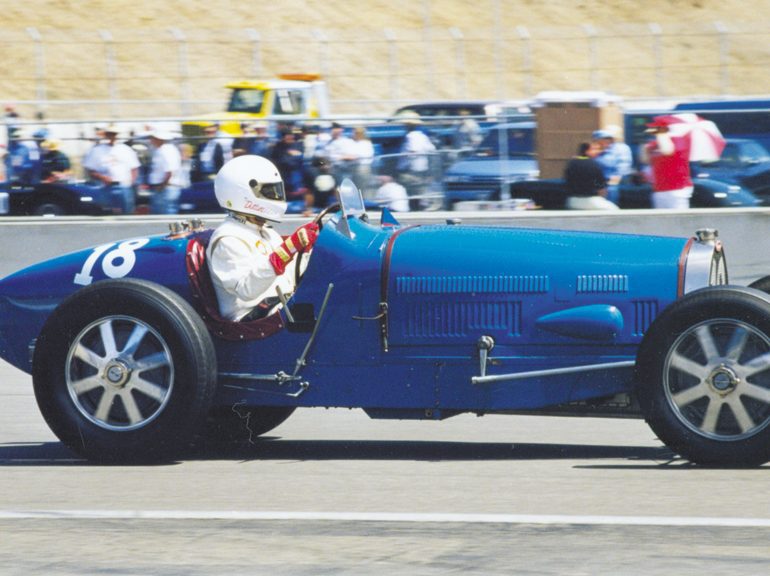From the very beginning of the automobile, man built cars to compete with a passion for speed and technology. These early innovators are in an elite club with their place in automotive history guaranteed as the creators of a true classic sports car, a genuine thoroughbred.
The development of the racing sports car can be traced to specific manufacturers who at one time in history dominated motor racing, in particular the world’s most challenging road races, such as the Mille Miglia, Targa Florio and endurance contests such as the Le Mans 24 Hours.
The creation of an automobile which could win in international competition was usually the inspiration of one passionate man, an engineer, a genius who put all of his design and engineering skills toward his goals.
Part one of this pre-war market guide will feature some of these exciting cars, their founders and designers. Alfa Romeo – Nicolo Romeo and Vittorio Jano, and Bugatti – Ettore Bugatti and sons.
Today, these pre-war masterpieces are highly sought after by the sophisticated collector.
They and their current owners are often invited to partake in the most prestigious historic racing venues world wide—the Le Mans 24 Hour Classic, Mille Miglia Storica, Monaco Historique Grand Prix and the Targa Florio to name but a few.
Due to the age of these cars and their racing heritage, their value is determined by their originality and provenance. Old cars built up from parts are not the same as true complete survivors. In many cases, this attrition can brin the remaining total down to less than 10 good surviving examples of a particular model.
| Make | Model | Level III | Level II | Level I |
| AC | 12/24 | $30,000 | $40,000 | $50,000 |
| 12/40 | $30,000 | $40,000 | $50,000 | |
| Ace 16/56 | $40,000 | $50,000 | $60,000 | |
| Ace 16/66 | $50,000 | $60,000 | $70,000 | |
| Ace 16/80 – 16/90 | $85,000 | $100,000 | $125,000 | |
| Alfa Romeo | RL Targa Florio | $250,000 | $300,000 | $400,000 |
| 6C 1500 SS/SC | $200,000 | $225,000 | $250,000 | |
| 6C 1750 GS/SC Zagato | $350,000 | $425,000 | $500,000 | |
| Tipo B Monoposto P3 | $1,800,000 | $2,000,000 | $2,300,000 | |
| Tipo C Monoposto 8C35 | $1,200,000 | $1,500,000 | $1,700,000 | |
| Tipo 8C 2300 | $900,000 | $1,100,000 | $1,300,000 | |
| Tipo 8C 2300 Lungo (Le Mans) | $1,000,000 | $1,500,000 | $1,800,000 | |
| Tipo 8C 2300 Corto (Mille Miglia) | $1,800,000 | $2,100,000 | $2,400,000 | |
| Tipo 8C 2300 Spider Corsa (Monza) | $2,000,000 | $2,500,000 | $2,800,000 | |
| Tipo 8C 2900B Corto | $2,700,000 | $3,500,000 | $4,200,000 | |
| Tipo 8C 2900B Lungo | $2,000,000 | $2,500,000 | $3,200,000 | |
| Alvis | 4-Cyl., FWD | $100,000 | $130,000 | $160,000 |
| Amilcar | 6C | $75,000 | $100,000 | $150,000 |
| Aston Martin | Ulster Mk II | $125,000 | $150,000 | $175,000 |
| Lemans | $200,000 | $250,000 | $300,000 | |
| 2-Liter Speed Model | $60,000 | $80,000 | $100,000 | |
| Bentley | 3-Liter Speed Model | $150,000 | $200,000 | $250,000 |
| Big Six | $400,000 | $500,000 | $600,000 | |
| 4.5-Liter | $250,000 | $300,000 | $350,000 | |
| Speed Six | $500,000 | $700,000 | $900,000 | |
| 4.5 Liter Blower | $500,000 | $700,000 | $900,000 | |
| 8-Liter | $325,000 | $450,000 | $600,000 | |
| BMW | 328 | $200,000 | $250,000 | $300,000 |
| Bugatti | Type 35 | $900,000 | $1,100,000 | $1,300,000 |
| Type 37A Supercharged | $800,000 | $900,000 | $1,100,000 | |
| Type 51 | $900,000 | $1,100,000 | $1,300,000 | |
| Type 57SC Atalante | $1,700,000 | $1,800,000 | $2,000,000 |
1931 Alfa Romeo 6C1750 Supercharged Grandsport Zagato 5th Series

Alfa Romeo was well known for its excellent handling eight-cylinder sports cars and Grand Prix cars during the 1920’s and 1930’s. They were designed by an engineering genius, one Vittorio Jano. However, Jano also designed a successful six-cylinder car, the 6C1750 supercharged Grandsport. The engine was an inline six-cylinder of 1750 cc displacement with twin overhead camshafts, dual Memini carburetors and supercharged to produce about 100 bhp. The racing team was managed by one Enzo Ferrari. Several great drivers piloted the superb handling 6C1750 to competition successes in the Mille Miglia, Targa Florio, Monza, and even Le Mans. Coachwork was available from different companies but the later 5th and 6th series Zagato-bodied cars are the most popular. The 6C1750 is an excellent car to run in the pre-war category of all events for a fraction of the price of an 8C.
1931 Bugatti T51 Grand Prix Car

Ettore Bugatti, an accomplished designer and engineer, had enjoyed racing success with the Type 35 and Type 37. To remain competitive Bugatti, who recognized the successful design of the America built Miller engine, adopted the Miller’s hemispherical cylinder head and twin overhead camshaft layout for his Type 51 engine, which also featured two valves per cylinder. This 2300 cc eight-cylinder engine was supercharged and produced 187 bhp. The Type 51 was Bugatti’s classic Grand Prix car at its zenith and was an answer to the might of Alfa Romeo. The Type 51 won the 1931 Grand Prix of Monaco with Louis Chiron driving, the 1931 Grand Prix of Tunis with Achille Varzi and together Chiron and Varzi won the 10 hours of Montlhéry. These pre-war Grand Prix cars are early engineering marvels. It is impressive to think of the many innovations used then which still appear today in many cars.
Criteria Used For Assessing Valuations for this Guide:
- Degree of Originality
- Overall Condition, Restoration
- Technology, Design, Coachbuilder
- Production Numbers/Rarity
- Competition History
- Ownership History, Documentation
- Modern Event Eligibility
Regional Variances
The prices stated in this guide are based on U.S. values. The values of historic racing cars can vary as much as 25%-35% in other countries, depending on local market appeal, currency rates, import duties, and VAT. Most of the time, we are able to document known sales or closed escrows, as they say in real estate. When this is not possible, a logical estimate of the car’s value is given, based on its sales history and relationship to cars of its type.
The prices stated in this guide are based on U.S. values. The values of historic racing cars can vary as much as 25%-35% in other countries, depending on local market appeal, currency rates, import duties, and VAT.
LEVEL |
VALUATION CATEGORIES |
|---|---|
I |
The best combination of all criteria. |
II |
Satisfies mid-range of criteria. |
III |
In need of restoration. Meets only a few points of criteria |




